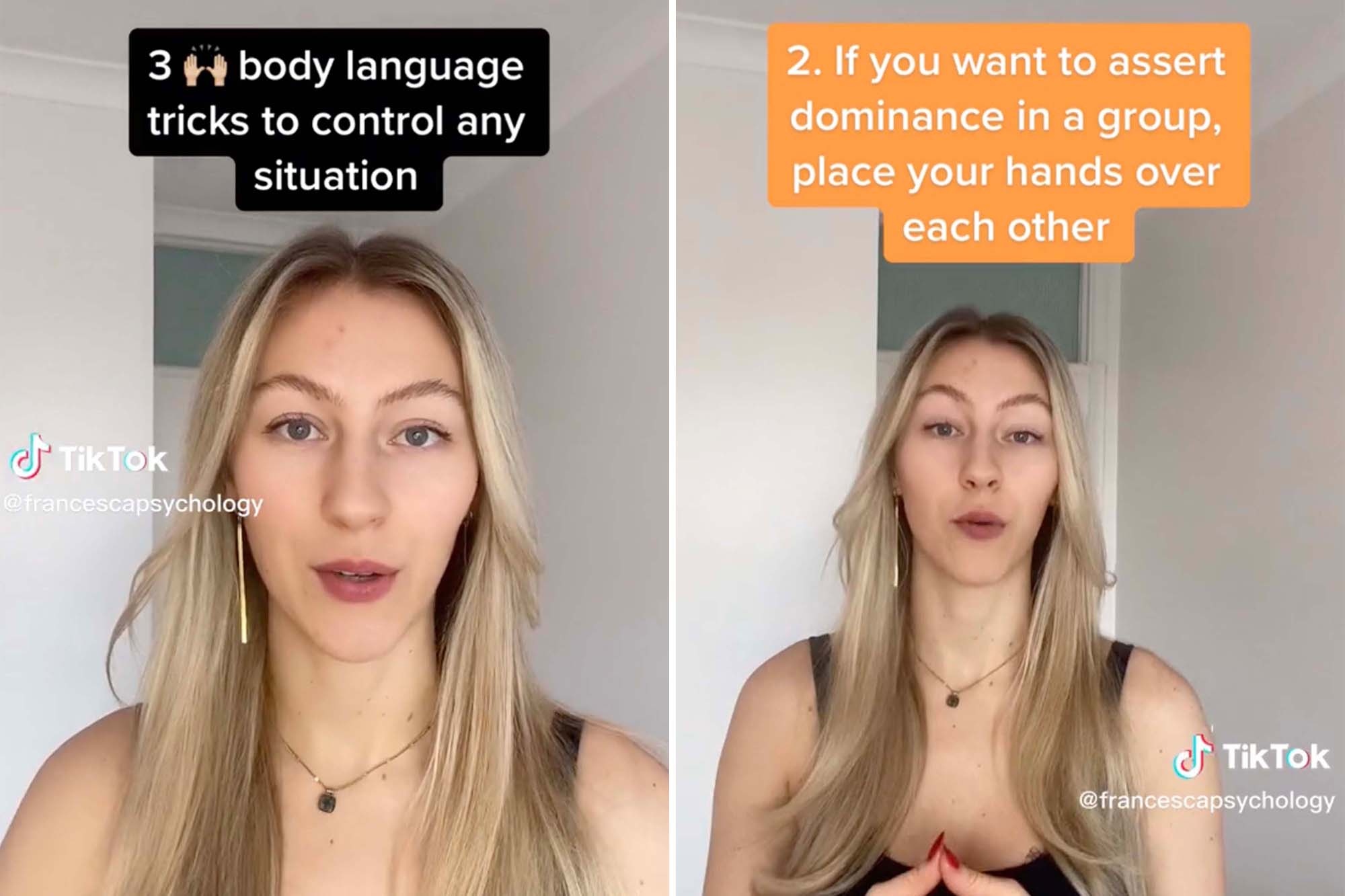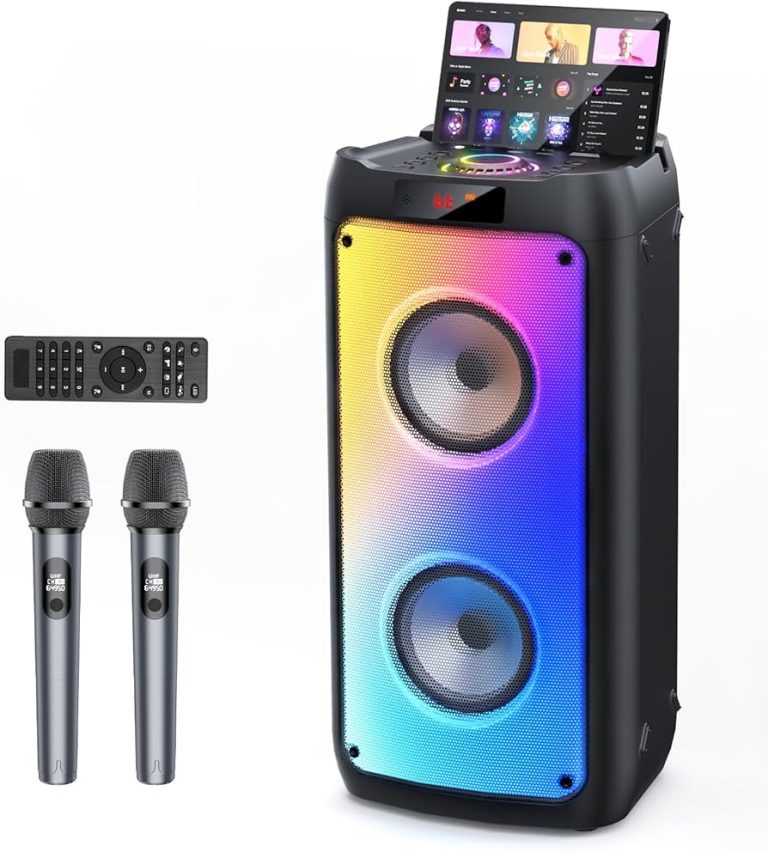How to Control Body Language?
To control body language, focus on maintaining good posture and using open gestures. Proper posture exudes confidence, while open gestures promote friendliness and approachability.
Additionally, maintaining eye contact, mirroring the body language of others, and managing nervous habits can further enhance body language control. By practicing these techniques, one can effectively convey the desired message and create a positive impression in various social and professional settings.
Understanding The Power Of Non-Verbal Communication
Learn how to effectively control your body language and harness the power of non-verbal communication. Understand the impact of gestures, facial expressions, and posture to convey your message with confidence and influence. Master the art of non-verbal cues for effective communication.
Non-verbal communication plays a crucial role in how we convey messages to others. Body language, in particular, can often speak louder than words. Understanding the power of non-verbal communication can help us control our body language and enhance our interactions with others.
In this section, we will explore the different aspects of body language as a form of communication, its impact on interpersonal relationships, and its role in professional settings.
Body Language As A Form Of Communication:
- Body language is a silent form of communication that involves the use of facial expressions, gestures, posture, and other non-verbal cues to convey messages.
- It is a universal language that transcends cultural and language barriers, allowing us to connect with others on a deeper level.
- Non-verbal cues can often reveal our emotional state, intentions, and attitudes, even when our words may suggest otherwise.
- Paying attention to both our own body language and that of others can help us better understand the underlying messages being communicated.
Impact Of Body Language On Interpersonal Relationships:
- Body language plays a significant role in building and maintaining relationships with others.
- Positive body language, such as maintaining eye contact, smiling, and using open gestures, can create a sense of trust and rapport.
- On the other hand, negative body language, such as crossed arms, lack of eye contact, or fidgeting, can convey disinterest, defensiveness, or discomfort.
- Being aware of our own body language and making conscious efforts to project positive signals can improve our interactions with others and foster stronger bonds.
Role Of Body Language In Professional Settings:
- In the professional world, body language is especially important as it can influence how others perceive us and our credibility.
- Confident body language, such as standing tall, maintaining good posture, and using firm handshakes, can create a positive impression in interviews, presentations, and meetings.
- Effective use of non-verbal cues, such as nodding to show engagement, maintaining eye contact to convey active listening, and mirroring others’ body language to build rapport, can enhance our professional relationships.
- However, it is essential to be mindful of potential cultural differences in body language and adapt accordingly to avoid misunderstandings or misinterpretations.
Remember, understanding and controlling our body language can significantly impact our communication and relationships. So, let’s explore further ways to master this powerful tool and achieve better interactions with others.

Credit: bmmagazine.co.uk
Techniques To Improve Body Language
Learn effective techniques to control your body language and make a positive impact. Enhance your non-verbal communication skills with simple practices to convey confidence and professionalism.
Having control over your body language can significantly impact how you are perceived by others. It can convey confidence, trustworthiness, and assertiveness, enhancing your overall communication skills. In this section, we will explore a range of techniques to improve your body language.
Developing Self-Awareness Of Body Language
Developing self-awareness is the first step towards controlling your body language effectively. By paying attention to your own non-verbal cues, you can identify areas for improvement and make conscious changes. Here are some ways to develop self-awareness of your body language:
- Observe yourself: Take notice of your posture, gestures, and facial expressions during different interactions and situations.
- Record yourself: Use a camera or a mirror to record and review your body language. This can provide valuable insights into your natural habits and areas that need adjustment.
- Seek feedback: Ask a trusted friend or colleague to provide constructive feedback on your body language. Their observations can help you identify things you may not notice yourself.
Importance Of Posture And Body Alignment
Posture and body alignment play a crucial role in projecting confidence and authority. Here are some key aspects to consider when it comes to improving your posture:
- Stand tall: Hold yourself upright with your shoulders back and your head held high. This not only conveys confidence but also improves your breathing and overall health.
- Balanced distribution of weight: Whether sitting or standing, distribute your weight evenly between both feet or both sides of your body. This helps avoid a slouched or uneven posture.
- Relaxed yet engaged stance: Maintain a relaxed posture while still being engaged. Avoid slouching or leaning, as it can give the impression of disinterest or lack of confidence.
Eye Contact And Its Significance
Eye contact is a powerful aspect of body language that can convey interest, trustworthiness, and sincerity. Paying attention to eye contact can greatly improve your communication skills. Here’s why eye contact is significant:
- Builds trust: Maintaining consistent and appropriate eye contact demonstrates trustworthiness and sincerity, making others feel more comfortable with you.
- Conveys confidence: Direct eye contact portrays confidence and attentiveness. It shows that you are engaged in the conversation and value the other person’s presence.
- Enhances connection: Eye contact helps establish a deeper connection with others by conveying interest and understanding.
Effective Use Of Facial Expressions
Facial expressions are a vital component of body language that can profoundly impact how we are perceived. Here are some tips for effectively using facial expressions:
- Smile genuinely: A genuine smile can instantly make you more approachable and likable. Practice smiling naturally, ensuring it reaches your eyes.
- Display interest and attentiveness: Use facial expressions, such as nodding or raised eyebrows, to show that you are actively listening and engaged in the conversation.
- Control microexpressions: Be aware of subtle facial expressions that can unintentionally convey negative emotions. Practice managing and minimizing these microexpressions.
By implementing these techniques and consistently practicing them, you can gain better control over your body language and positively influence your interactions with others. Remember, body language is a powerful tool that can enhance your communication skills and personal relationships.
Tips For Controlling Body Language
Learn how to control your body language with these essential tips. Discover techniques to convey confidence, assertiveness, and professionalism through non-verbal cues. Master the art of body language for effective communication and building successful relationships.
Managing hand gestures and movements:
- Keep your hand gestures purposeful and controlled, as excessive or erratic movements can distract or confuse others.
- Avoid crossing your arms, as it may convey defensiveness or disinterest.
- Use open palms instead of clenched fists to appear approachable and non-threatening.
- Maintain good posture and avoid fidgeting to project confidence and professionalism.
Utilizing appropriate body movements and positioning:
- Maintain eye contact with the person you are communicating with to show attentiveness and sincerity.
- Lean slightly towards the person to indicate interest and engagement in the conversation.
- Mirror the other person’s body language subtly to establish rapport and create a sense of connection.
- Smile genuinely and nod occasionally to convey friendliness and agreement.
Understanding the impact of personal space:
- Respect personal boundaries by maintaining an appropriate distance during interactions.
- Be mindful of cultural norms and allow for comfortable personal space.
- Invading someone’s personal space can make them feel uncomfortable or threatened, so ensure you maintain a respectful distance.
Modulating voice tone and volume to align with body language:
- Speak clearly and audibly, adjusting your volume to match the context and environment.
- Use a calm and relaxed tone to convey confidence and control.
- Avoid speaking too softly, as it may make you appear unsure or lacking in authority.
- Match your voice tone and volume with your facial expressions and gestures to create a consistent message.
Remember, controlling body language is essential for effective communication. By managing hand gestures, utilizing appropriate body movements, understanding personal space, and aligning voice tone and volume, you can convey your messages more effectively and establish a positive impression on others.
Practice these tips consistently to improve your body language and enhance your communication skills.
Link Between Emotions And Body Language
Discover the powerful link between emotions and body language and learn effective ways to control your own nonverbal communication. Gain insights into how emotions can influence body movements and gestures, and acquire tips on how to express yourself confidently through conscious body language control.
Body language is a powerful form of communication that can speak volumes without a single word being uttered. Our emotions have a profound impact on our body language, influencing the way we carry ourselves and the signals we send to those around us.
Understanding the link between emotions and body language is key to being able to control and harness our non-verbal cues effectively. In this section, we’ll explore the connection between emotions and non-verbal cues, as well as common emotional expressions and their manifestations in body language.
Connection Between Emotions And Non-Verbal Cues:
- Our emotions have a direct influence on how we hold ourselves, move, and interact with others.
- Negative emotions such as anger, fear, and sadness can often result in closed-off and defensive body language, including crossed arms, tense muscles, and a lowered head.
- Positive emotions like happiness and confidence, on the other hand, can lead to open and welcoming body language, with relaxed postures, genuine smiles, and maintained eye contact.
- The mind-body connection is a significant factor in the manifestation of our emotions through non-verbal communication.
Common Emotional Expressions And Their Manifestations In Body Language:
- Happiness: A genuine smile accompanied by relaxed facial muscles and a lightness in the step.
- Anger: Clenched fists, tensed jaw, furrowed brows, and an assertive stance.
- Fear: Wide eyes, raised shoulders, a stiff posture, and a tendency to avoid direct eye contact.
- Sadness: Slumped shoulders, downward gaze, slow movements, and a lack of energy.
- Surprise: Raised eyebrows, widened eyes, dropped jaw, and an upright posture.
- Disgust: A wrinkled nose, narrowed eyes, and a slightly turned away or recoiling body language.
Understanding the relationship between emotions and body language is essential in both personal and professional interactions. Being mindful of the signals we are sending and aware of how they may be interpreted by others can help us to communicate effectively and build strong connections.
By recognizing the impact our emotions have on our body language, we can strive to project confidence, approachability, and empathy in all situations. So, take control of your body language and harness the power of non-verbal cues to convey the messages you want to send.
Techniques To Emotionally Control Body Language
Learn effective techniques for mastering body language control, enabling you to project confidence and manage your emotions with ease. Discover how to regulate your gestures, posture, and facial expressions to convey the desired message and influence others positively.
Body language plays a vital role in our day-to-day interactions. It not only helps us communicate non-verbally but also conveys our emotions and intentions. Being aware of and controlling our body language can significantly impact how others perceive and respond to us.
In this blog post, we will explore techniques to emotionally control body language, focusing on recognizing and managing stress and anxiety, cultivating emotional intelligence, and developing techniques for emotional regulation.
Recognizing And Managing Stress And Anxiety:
- Take deep breaths: Breathing exercises can help calm your mind and body, reducing stress and anxiety levels.
- Practice mindfulness: By staying present in the moment, you can better observe and manage your body language responses to stressful situations.
- Identify triggers: Understanding what causes stress and anxiety in your life can help you recognize and control how your body language may change in these situations.
- Seek support: Engaging in conversations with trusted friends, family, or professionals can provide valuable insights and coping strategies for managing stress and anxiety.
Cultivating Emotional Intelligence:
- Self-awareness: Regularly observe and reflect on your own body language, paying attention to how it aligns with your emotions.
- Empathy: Develop an understanding of how others might interpret your body language and work towards conveying your intentions effectively.
- Active listening: Pay attention to both verbal and non-verbal cues from others to enhance your emotional intelligence and respond appropriately.
- Non-judgmental mindset: Avoid making assumptions or passing judgments based solely on body language cues, as they may not always accurately reflect someone’s true emotions.
Developing Techniques For Emotional Regulation:
- Relaxation techniques: Incorporate practices such as meditation, yoga, or progressive muscle relaxation into your routine to manage emotions and control body language responses.
- Positive self-talk: Use affirmations and positive statements to reframe negative thoughts and emotions, thereby influencing your body language in a more constructive manner.
- Visualization: Imagine yourself in calm and confident situations, visualizing how you would like to present yourself through your body language.
- Practice assertiveness: Learning to express your thoughts and feelings assertively can help maintain positive body language while effectively communicating your needs.
By implementing these techniques, you can enhance your ability to emotionally regulate your body language, leading to more positive interactions and improved communication skills. Remember, self-awareness and consistent practice are key to mastering the art of controlling body language. So, embrace these strategies and embark on your journey towards better communication through non-verbal cues.
Body Language In Social Interactions
Mastering body language is key to controlling social interactions. Discover effective techniques to ensure your body language sends the right signals and influences positive communication.
When it comes to social interactions, body language plays a crucial role in conveying your thoughts, feelings, and intentions. Effective body language can help you build rapport, establish trust, and enhance communication. In this section, we will explore the importance of body language in socializing and networking events, as well as its significance in dating and romantic relationships.
Effective Body Language For Socializing And Networking Events:
- Smile genuinely: A warm and genuine smile can make you approachable and friendly.
- Maintain eye contact: Sustaining eye contact shows interest and engagement in the conversation.
- Use open body posture: Keeping an open body posture, with uncrossed arms and legs, signals approachability and openness.
- Lean in slightly: Leaning in slightly towards the person you are conversing with shows that you are attentive and focused.
- Mirror body language: Subtly mirroring the other person’s body language can create a sense of connection and rapport.
- Practice active listening: Nodding occasionally, using affirmative gestures, and responding with appropriate facial expressions demonstrate active listening.
Importance Of Body Language In Dating And Romantic Relationships:
- Positive first impressions: During initial dates, body language can significantly impact the impression you create. Maintaining good posture, making eye contact, and displaying open body language can make you more attractive and approachable.
- Nonverbal communication of interest: Body language can indicate your level of interest in someone. Leaning in, facing the person directly, and initiating physical touch (when appropriate) can demonstrate attraction.
- Building emotional connection: Effective body language, such as gentle touch, maintaining eye contact, and mirroring gestures, can help foster emotional connection and intimacy in relationships.
- Resolving conflicts: In romantic relationships, body language can play a crucial role in resolving conflicts. Maintaining calm body posture, using non-threatening gestures, and actively listening can help deescalate tense situations.
Remember, mastering body language takes practice and self-awareness. By being mindful of your own nonverbal cues and observing others, you can harness the power of body language to improve your social interactions and relationships.
Body Language In Professional Settings
Control your body language in professional settings with these effective tips. Learn how to project confidence, maintain eye contact, use open gestures, and regulate your facial expressions to enhance communication and make a positive impact.
:
Impression Management Through Body Language In Job Interviews:
- Maintaining good eye contact: By making consistent eye contact with the interviewer, you convey confidence and engagement. Avoiding extended periods of looking away or staring can help leave a positive impression.
- Effective hand gestures: Using appropriate hand gestures can add emphasis to your words and help convey your message more effectively. However, be mindful of excessive gesturing, as it can be distracting.
- Good posture: Sitting or standing with an upright posture exhibits confidence and professionalism. Slouching or leaning back can give the impression of disinterest or lack of confidence.
- Controlled facial expressions: Displaying a neutral or pleasant facial expression throughout the interview can create a positive impression. Avoiding excessive smiles or frowns can help maintain a professional demeanor.
Enhancing Leadership Presence Through Non-Verbal Cues In The Workplace:
- Confident body language: Standing or sitting tall with an open posture demonstrates confidence and assertiveness. This can inspire trust and respect from team members.
- Effective use of gestures: Utilizing purposeful gestures while speaking can enhance your message and captivate your audience. However, be mindful of the appropriateness and relevance of your gestures.
- Active listening through body language: Engaging in active listening through nods, appropriate facial expressions, and maintaining eye contact shows that you value others’ input. This fosters a positive and inclusive work environment.
- Power poses: Adopting power poses, such as standing with hands on hips or leaning forward on a desk, can boost your confidence and command attention. These poses can be especially useful when presenting or leading meetings.
Remember, mastering body language in professional settings requires practice and self-awareness. By paying attention to your non-verbal cues, you can effectively communicate your message and build stronger relationships in the workplace.
Body Language In Public Speaking
Learn how to control your body language in public speaking to improve your communication skills. By being mindful of your gestures, posture, and facial expressions, you can effectively convey your message and engage your audience.
Utilizing Body Language To Engage And Captivate An Audience
When it comes to public speaking, body language plays a crucial role in effectively delivering your message and connecting with your audience. Utilizing the right body language can help you engage and captivate your listeners, making your speech more impactful.
So, let’s explore some powerful techniques that can elevate your public speaking game:
- Posture and stance: Stand tall with your shoulders back and your head held high. This confident posture not only exudes self-assurance but also helps you project your voice better.
- Eye contact: Maintain eye contact with your audience to establish a connection and convey trustworthiness. Look into the eyes of individuals throughout the room, creating a sense of individual connection.
- Gestures: Use purposeful gestures to enhance your verbal communication. Gestures can help you emphasize key points, convey emotions, and keep your audience engaged.
- Facial expressions: Your facial expressions can convey a wealth of emotions and add depth to your speech. Smile when appropriate and let your face reflect the emotions you want to convey.
- Movement: Utilize movement on the stage to keep your audience visually engaged. Walk purposefully, use the entire stage area, and vary your movement to match the tone and content of your speech.
- Voice modulation: The way you speak can greatly impact how your audience perceives your message. Pay attention to your tone, pitch, volume, and pace to keep your audience engaged and interested.
- Body mirroring: Mirroring your audience’s body language subtly can help build rapport and create a sense of connection. Pay attention to how your listeners are sitting or standing and adjust your own posture accordingly.
By incorporating these body language techniques into your public speaking skills, you can effectively engage and captivate your audience, resulting in more impactful presentations. Confidence, authenticity, and the power of non-verbal communication can truly elevate your public speaking abilities. So, practice and embrace the power of body language to leave a lasting impression on your audience.
Frequently Asked Questions For How To Control Body Language?
Can Someone Control Their Body Language?
Yes, people can control their body language.
What Are The 4 Types Of Body Language?
The four types of body language include facial expressions, gestures, postures, and eye movements.
What Are The 5 Best Body Language Tricks?
Here are 5 body language tricks to improve your communication skills: 1. Maintain eye contact to show interest and attentiveness. 2. Use open body posture to appear approachable and friendly. 3. Smile genuinely to create a positive and welcoming impression. 4.
Practice mirroring to build rapport and establish a connection. 5. Use confident gestures to convey authority and self-assurance.
What Causes Bad Body Language?
Negative emotions and lack of self-awareness result in bad body language.
Conclusion
Understanding and controlling body language is essential in both personal and professional interactions. By becoming aware of our own nonverbal cues and interpreting those of others, we can establish better connections, communicate more effectively, and convey confidence and credibility. To control body language, start by observing yourself in different situations and identifying any patterns or habits that may need adjustment.
Make a conscious effort to use open and positive gestures, maintain eye contact, and display genuine interest and engagement. Practice mirroring and matching techniques to build rapport with others. Remember that body language is just one aspect of overall communication, and it should be aligned with your verbal messages to avoid creating mixed signals.
Consistently working on improving your body language can have a significant impact on your interactions, helping you build rapport, enhance relationships, and create a positive impression overall. By mastering this skill, you can become a more effective communicator and achieve greater success both personally and professionally.


